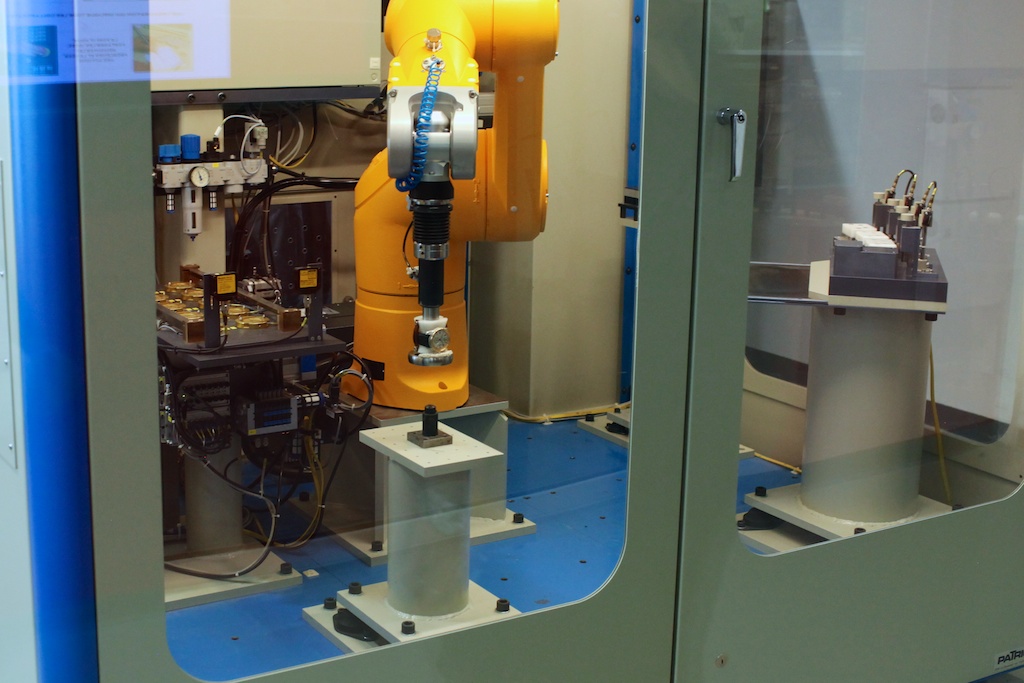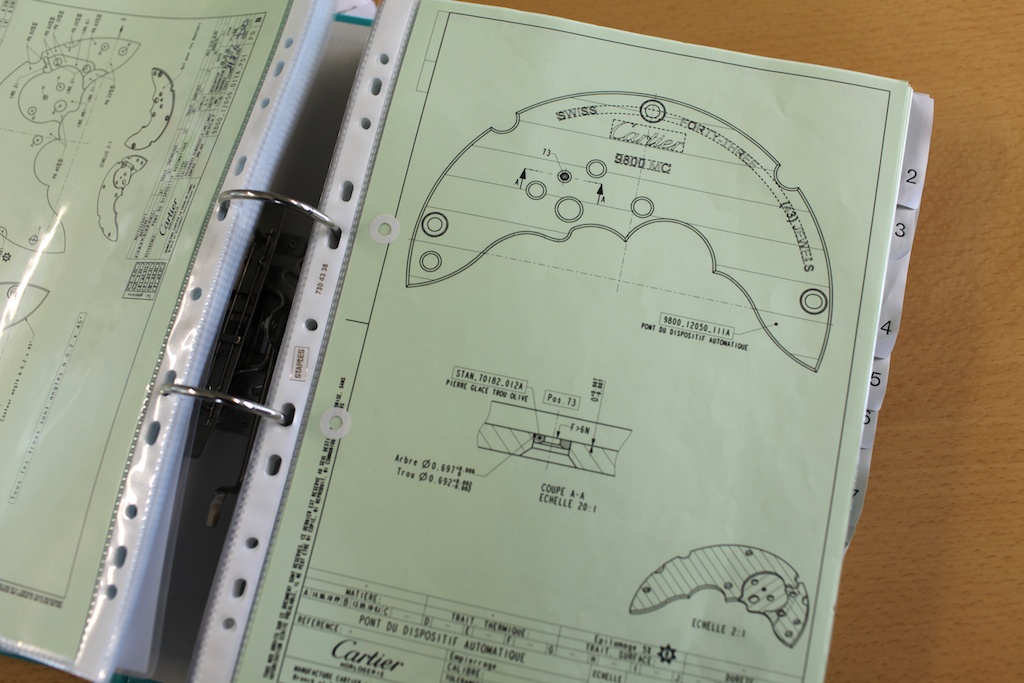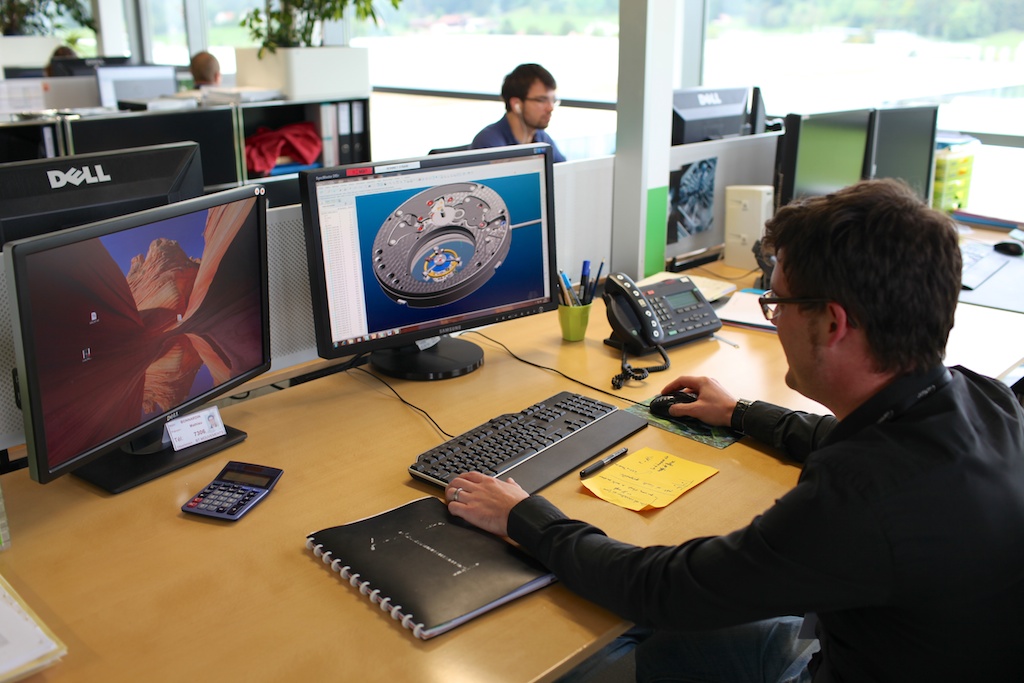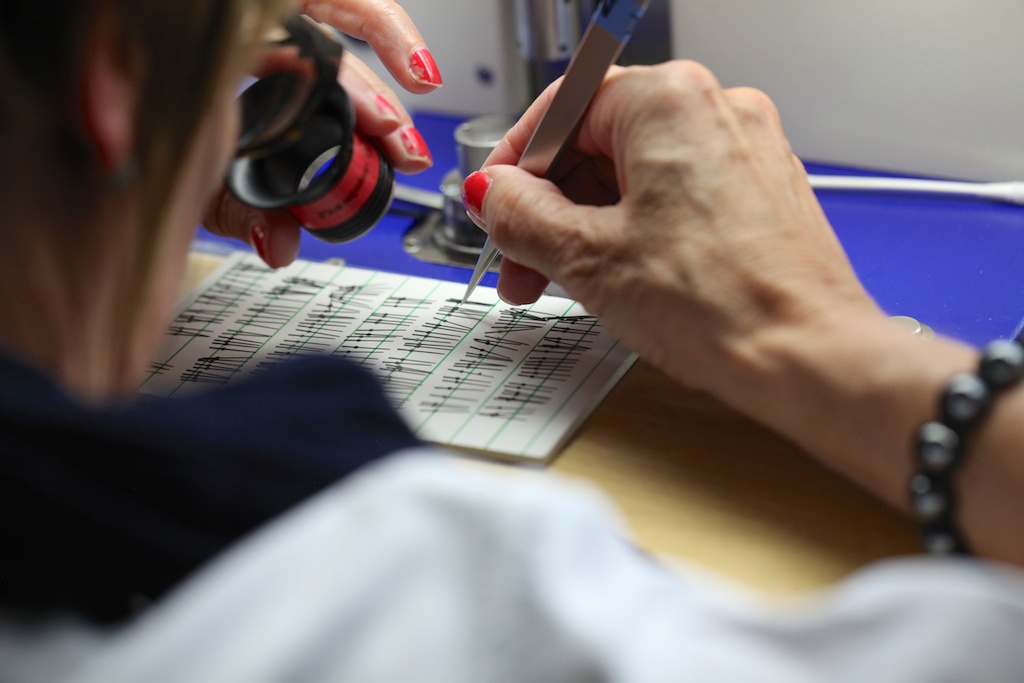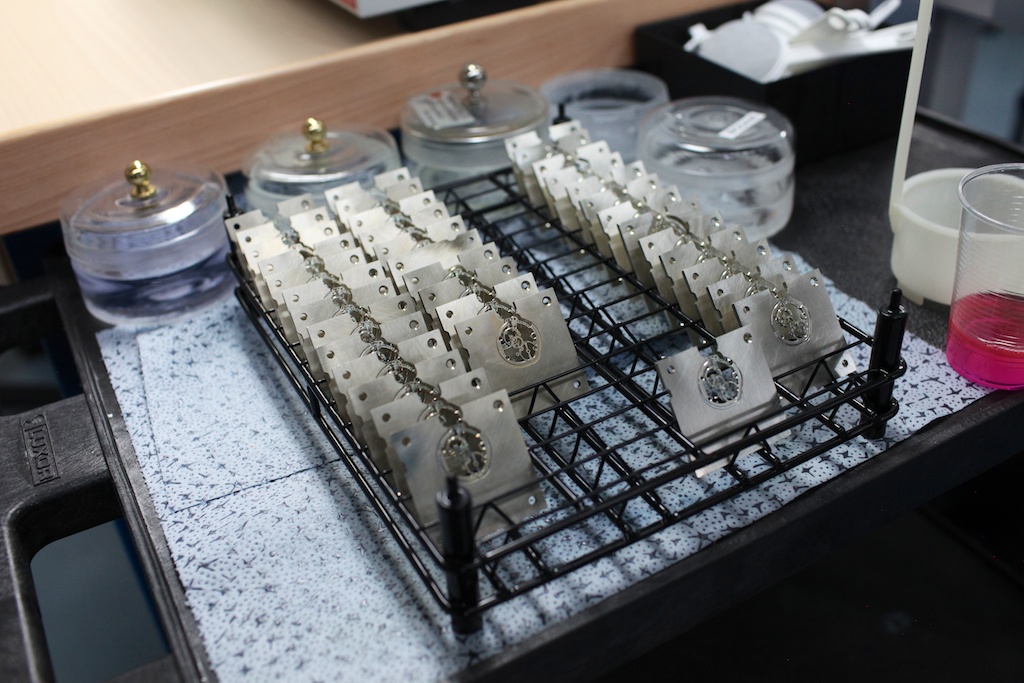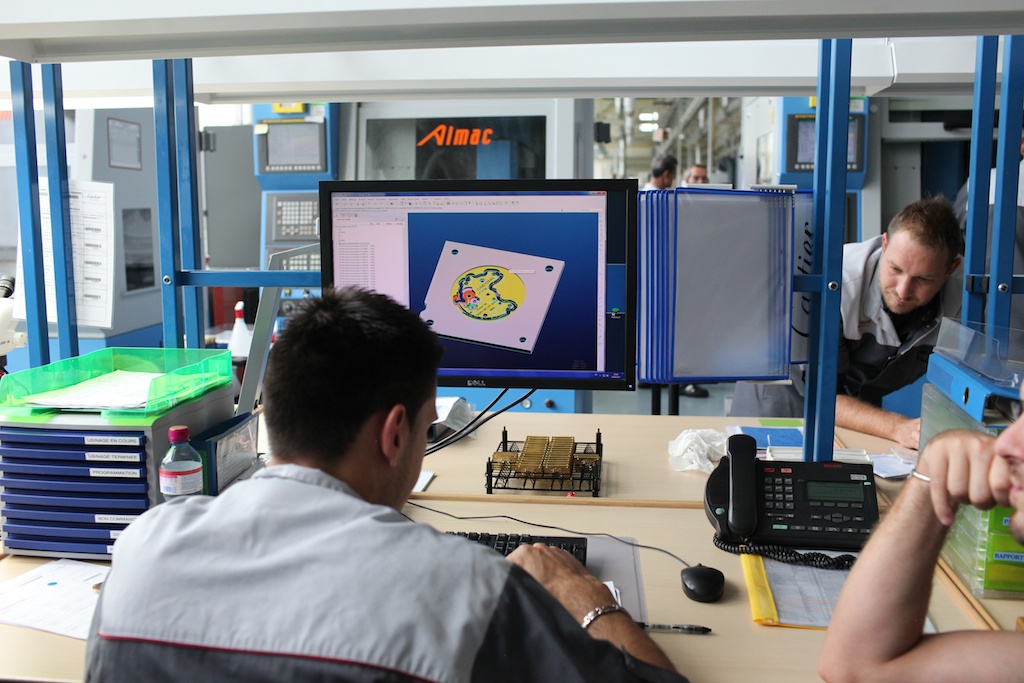:)
The Illinois
Frank Lloyd Wright in 1956 with his design for The Illinois, a skyscraper that would have been by far the tallest in the world. via A Conversation on Cool.
More T-Splines
This is pretty fun. The first shot is of the control frame view; the second is smoothed - which is how the part would be produced.
I'm new at T-spline modeling, and have a few issues with this model. Nonetheless, it's basically ready to be converted into a mechanical assembly. There, it would be split into a frame and arms; hinges would be installed; lens features would be designed.
Pretty fun.
Mailing List is Live.
And the signup is HERE.
A few questions:
Why am I starting a mailing list?
Because it's good.
Do people *do* mailing lists?
I don't know. Do people do RSS? Do they look at websites on a regular basis? If everything is going mobile (as it appears it is) then I'm guessing the answer to the above is "mostly no." I'm not sure email is the cure (cf. Paul Graham's "Frighteningly Ambitious Startup Ideas," point 2), but I'm trying not to try to change user behavior. And anyway, why *not* do a mailing list?
What's on this mailing list?
Oh, I don't know. Whatever. Something about behavioral psychology, something about probability. Something about design, or startup ideas. Maybe something from the Shouts & Murmurs section, or a link to an xkcd comic, or whatever.
Good stuff.
Are you gonna spam me?
Oh, give me a break. It's on MailChimp, it's standard operating procedure, etc. Plus I'm a decent person.
What else?
Is there anything else? I think that's it. Sign up, it'll be kinda fun.
Also @ Todd's
Progress: The Public Radio
Last night, Zach and I bribed Todd to help us jumpstart The Public Radio a bit. When we last worked on it, we had a short on the 3.3v line that we couldn't find. Well, that was fixed in short order, and we also were able to diagnose & fix a few other issues that we weren't aware of.
We left with a board that's still not quite ready, but it's getting a lot closer. We also had a few more thoughts about how we should be proceeding, and it seems likely that they'll brew into something more actionable in the coming weeks.
It seems likely that with another day's work, we could get this board tuned up and blasting HOT97 like it should be. At that point, though, we need to undertake a total redesign of the whole assembly. The PCB is the wrong size & shape; the speaker is too large; the potentiometer isn't long enough; the lid is the wrong thickness (and, ultimately, the wrong material).
It's also seeming likely that we end up redesigning the radio to be a simpler (and possibly analog) device... but that will only happen further down the line.
My Beef with iOS Newsstand
I made a lame attempt to describe why I'm not a fan of the iOS Newsstand app last weekend, and thought a bit about it afterwards. Quickly, here are my thoughts:
The problem with Newsstand is that it begins with the base assumption that periodicals constitute a meaningful subcategory of content distribution media.
Part of the lesson of the past few decades is [citation needed] that consumers don't care about distribution platforms. They're perfectly happy watching TV on their computers, reading newspapers on their iPads, and listening to talk "radio" shows as Podcasts. They'll happily trade their coffee table books for Tumblr blogs, and have little qualms skipping the bar and finding a date on a smartphone app.
Newsstand somehow misses this. It tries to package and export the entire magazine experience onto my phone, ignoring the myriad ways that I've found to consume content there and instead setting up a walled garden within which I'm allowed to view periodicals.
In my perfect world, periodicals would integrate seamlessly into Pocket or Instapaper. My subscription to the New Yorker should automatically download new articles to those apps, where I can decide when and where to consume them. Pocket is where I do nearly all of my written media consumption, and I see no reason why periodicals should be any different.
Seeing What's Next
This chart got around a few days back when Horace Dediu posted a screenshot on twitter. The full-res version, below, is pretty awesome. From the Asymco blog.
T-Spline modeling
This model took me about 45 minutes. It's basically the first "organic" model I've ever created. 100% T-spline geometry, all on a piece of free software.
I started with a single torus on the XY plane for one of the eyepieces. I applied a "Mirror-Duplicate" on the YZ plane, creating a second eyepiece that automatically mirrors whatever I did on the first. Then I created the only sketch in the entire model - a basic nose bridge, spanning from eyepiece to eyepiece. I created a "Bridge" feature between the two eyepieces, then began to sculpt. A bit into the process, I created the temples by extruding them from the faces closest to the top corners of the eyepieces.
At this point, I could export STLs and have this printed as a full scale, physical, part-in-hand mockup. The entire process - from sketching the torus to completing the print - would take about 4.5 hours.
Note: I'm assuming you're using FDM (a process I'll begrudgingly accept for quick mockup purposes), e.g. MakerBot, and that your Lean, One-Piece-Flow Supply chain (as it were) is ready and running smoothly.
Update: Dropout protector
Stopped by NYCVelo today to get design review on a few parts I've been playing with. While there, I tried out the dropout protector I designed on a fork they had laying around. It was the first chance I've had to do so.
The fit is snug, just like it should be - it took a mallet to get the protector in place. There's no chance it's going move around during shipping, but with a little careful prodding I was able to get it back out just fine.
I also left one of my dummy headsets there for them to use on frames around the shop. Brett was pretty excited about it, and it was great to get some feedback on the execution and pricing. I'll probably redesign the part soon and get an injection molded part quoted. In the meantime, the dropout protector is for sale at Shapeways if you want to grab one (or a dozen!) for yourself :)
Felix Salmon on Wine
Felix Salmon has a bunch of great posts on the ups and downs of blind wine tasting on his Reuters blog. A few excerpts below, emphasis mine throughout.
From "The Negative Correlation Between Wine Price and Quality," 2008.14.26:
Eric Asimov thinks that wine is like film or literature: the good might not be popular, and the popular might not be good. Which may or may not be true – but no one tries to charge higher prices for better films or better books. He does however make another good point: that the real finds in the wine world aren’t the expensive famous wines or even the cheap famous wines but rather the tiny artisanal wines which have a personality and uniqueness which defies pricing. If you find a wine you really love, then it’s likely to be worth spending money on. But if you find a wine which everybody loves (Dom Perignon is the example in the book), then it’s almost certainly overpriced.
From "Tasting Wine Blind," 2009.09.12:
In any case, the various different factors which go into the enjoyment of a wine are so multitudinous that when you try to eradicate them all in order to allow different wines to compete on a level playing field, you at the same time eradicate much of what makes a wine so enjoyable in the first place. You might love your spouse’s [insert body part here], but it would be pointless and invidious for someone to test that love by presenting you with a series of carefully anonymized body parts and asking you which one you liked the most.
And:
What is blind tasting good for? Well, for one thing it’s very good at showing how important knowledge of price, as opposed to price itself, is as a contributing factor to a wine’s perceived quality. If you know that a wine you’re drinking is expensive, you’ll probably like it much more. If you’re deceived into thinking that a wine is expensive (if someone poured Yellowtail into a Lafite bottle, say) you’ll like that much more, too. And if someone poured Lafite into a colorful screw-top bottle, you’d like it less.
When I say, then, that in wine there’s no correlation between price and quality, what I mean is that there’s no correlation between price and quality except for in the 99% of cases where in fact the correlation is very strong — the cases when you know, more or less, how expensive the wine you’re drinking is.
I’m trying to train myself out of that ingrained mindset, by drinking quite a lot of cheap wine and buying large quantities of the good stuff. And there really is a lot of good cheap wine out there. But I know that I do still have the same prejudices as everybody else, no matter how much I write about negative price-quality correlations. If I open a cheap bottle and I don’t think much of it at first, I’ll assume it’s not very good. On the other hand, if I open an expensive bottle and I don’t think much of it at first, I’ll let it breathe, I’ll revisit it later, I’ll try to see if I can discern some subtlety and sophistication which might not have been immediately apparent. And if I look hard enough, I’ll probably find it.
Also of note: In 2010, Salmon wrote a great post on how he structures his at-home wine tasting events. I've been wanting to host something similar for a while, and will definitely be taking his format notes into consideration.
Boards
From Bunnie's excellent rundown of his visit to the Arduino PCB factory.
Window
:)
Subjective well-being
From the wikipedia page for "Hedonic Treadmill," emphasis mine.
Headey (2008) concluded that an internal locus of control along with "positive" personality traits (notably low neuroticism) are the largest significant factors affecting one's subjective well-being (SWB). The author also found that adopting "non-zero sum" goals, that is those which enrich one's relationships with others and with society as a whole (family-oriented and altruistic goals), increase the level of SWB. Conversely, attaching importance to zero-sum life goals: career success, wealth, and social status, will have a small but nevertheless statistically significant negative impact on people's overall subjective well-being (even though the size of a household's disposable income does have a small, positive impact on SWB). Duration of one's education seems to have no direct bearing on life satisfaction. And contradicting set point theory, there is apparently no return to homeostasis after sustaining a disability or developing a chronic illness. These disabling events are permanent, and thus according to cognitive model of depression, may contribute to depressive thoughts and increase neuroticism (another factor found by Headey to diminish SWB). In fact disability appears to be the single most important factor affecting human subjective well being. The impact of disability on SWB is almost twice as large as that of the second strongest factor affecting life satisfaction—the personality trait of neuroticism.
...but is it hard?
I like digital prototypes, but I also like physical prototypes. This arrived this morning and will go through another design rev with Clay in the next week or so. And then, at some point... titanium?
The downside here is, I'll eventually need to build a new bike with an integrated seat post :/
Coffee Mill
Seen @ Gasoline Alley. This thing is badass cool, and reminded me of my (erstwhile?) coffee grinder (etc.) project.
Mailing list!
I know you're out there: The RSS readers, the folks who drop by, the people who are at least *somewhat* interested in what I'm thinking about.
So here's your chance!
I'm setting up a mailing list. Nothing fancy, just links to things I read on the internet and think are good. I read a lot, and the topics are varied, so expect a wide range of compelling to mindblowing to kind of weird stuff. I'll try to keep it predictable, concise, and relevant.
And I won't, like, spam you.
Here's a taste of my first draft:
So. Sign up below and I'll get in touch. It'll be fun.
Really.
Cartier
I love factory tours. These photos are excerpted from A Continuous Lean's tour of the Cartier factory in Switzerland, which looks like it'd be a treat.
Air Drive
At the risk of sounding naive
The act of putting yourself out there, of being outside of your abilities a bit. You take your experience, your expertise, and you venture a little bit beyond them. And some of what you know is applicable, but you've always got to keep in mind that whatever frameworks you're bringing to bear don't necessarily apply.
I like being this way - a bit over my head. But I'm at my best when I'm honest with that fact.
At the risk of sounding naive is a fairly good way to communicate this, in certain contexts.
